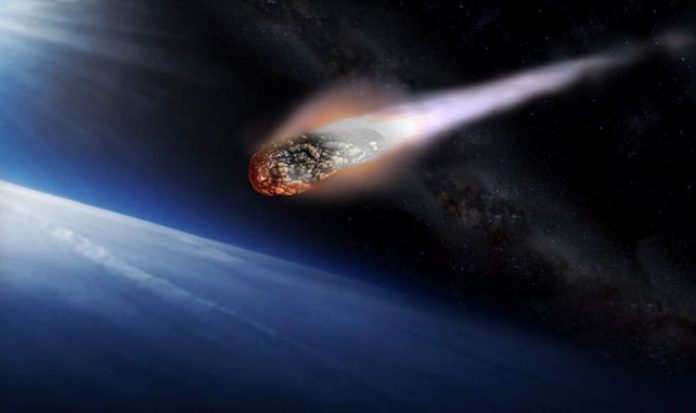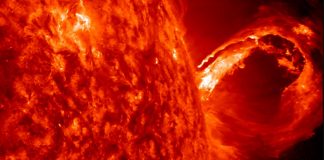Asteroid near Earth Friday, occur at 4.19pm GMT.
US space agency NASA has confirmed the asteroid, named 2019 DN, is classified as a Near Earth Object (NEO). NASA’s cutting-edge asteroid-tracking tech anticipates the space rock will skim Earth on Friday, March 8. And NASA Jet Propulsion Laboratory researchers calculated the closest approach will occur at 4.19pm GMT (11.19am ET).
The asteroid, measuring 656ft (200m) in diameter, will be barrelling through space at 16,000mph.
But there is no need to panic, as the asteroid will safely pass Earth’’s orbit come Friday.
The 2019 DN asteroid will in fact be more than 10 times farther away than the moon, meaning this is definitely not a doomsday situation.
In fact, 2019 DN will not even be the biggest asteroid on NASA’s radar this month.
That honour belongs to asteroid 2019 CD5, calculated by NASA to measure 750ft 230m in diameter.
The huge space rock 2019 CD5 will make its closet approach with Earth on March 20.
And the asteroid will also pass at a closer distance to this Friday’s space rock.
While there are plenty of NEOs yet to be discovered, the vast majority of them are probably harmless.
NASA said: ”Very few of these bodies are potential hazards to Earth, but the more we know and understand about them, the better prepared we will be to take appropriate measures if one is heading our way.”
The news of this week’s near-Earth approach comes as American science personality Bill Nye has revealed ”we are potentially missing a hundred thousand killer asteroids.”
The American science commentator said on the AsapSCIENCE YouTube channel: “What we want to do is build a spacecraft called the Sentinel Craft.
“Searching for asteroids is like looking for a charcoal briquette in the dark; these things are hard to find.
“These asteroids are tiny compared to the vastness compared to the vastness of space.
“But infrared light and heat bounces off these asteroids.
“So surveying spacecraft are positioned with their backs to the Sun and look out from the orbit of Venus.”













